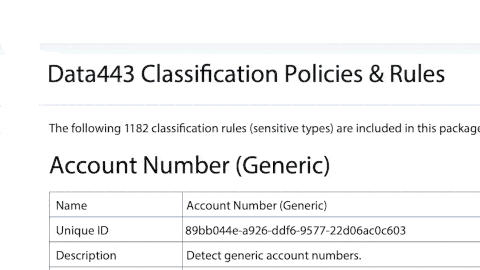Classification Demo



Why Is Data Classification Important?

Enhances Data Security
You can think of data classification like putting labels on boxes in a storage room. By sorting our data based on how sensitive or important it is, we can make smarter choices about protecting it. For the really important stuff – like personal customer details – we can add extra locks and alarms (like encryption and access controls). This way, we’re not just throwing a blanket security over everything; we’re making sure that the most valuable data gets the proper treatment.

Facilitates Compliance
Data classification is our GPS in navigating the complexities of policies like GDPR and HIPAA. By sorting our data, it becomes much easier to see which bits need to follow which rules. It’s like sorting laundry; you don’t wash your bright reds with your whites. Having a clear view of what sensitive data is where allows your organization to stay on the right side of the law.

Improves Data Management
Handling data well is key to getting things done efficiently. By classifying data, we’re basically organizing our digital filing cabinet, making it easier to find what we need, when we need it. This makes handling data, from storage to analysis, a smoother ride. Less clutter, less fuss.

Data Identification Managers Architecture.


Flexible and Comprehensive Built-In Policies for Data Classification.
Extensive Policy Repository
Our software includes a vast repository of over 1300 global privacy policies, covering 40+ native languages. This extensive range allows for immediate, accurate classification across diverse data types and regions, eliminating the need for time-consuming language translation.Customizable Classification Rules
Tailor your data classification to fit your unique needs. Our system allows you to mix, match, and modify existing policies to create new classification rules. This customization ensures a precise fit for your company’s specific data environment.Setting Confidence Levels and Unique Count Minimums
Gain control over classification accuracy. Adjust the confidence level to balance between precision and coverage, and set the unique count minimum to minimize false positives. This flexibility helps fine-tune the system to your organization’s data landscape.

Create a comprehensive classification, define its sensitivity levels, and establish east-to-use rules for its application.

Create custom policies using our 'Built-In Rules' to meet organizational needs while maximizing effectiveness.
Instant Data Classification
Classify your document in the most comprehensive repository of global privacy policies in the game. We scan against 1300+ policies in 40+ native languages, removing the time cost of language translation.
No RegEx, classify in seconds, build technical policy controls to govern sensitive data and even deploy via Azure or AWS.